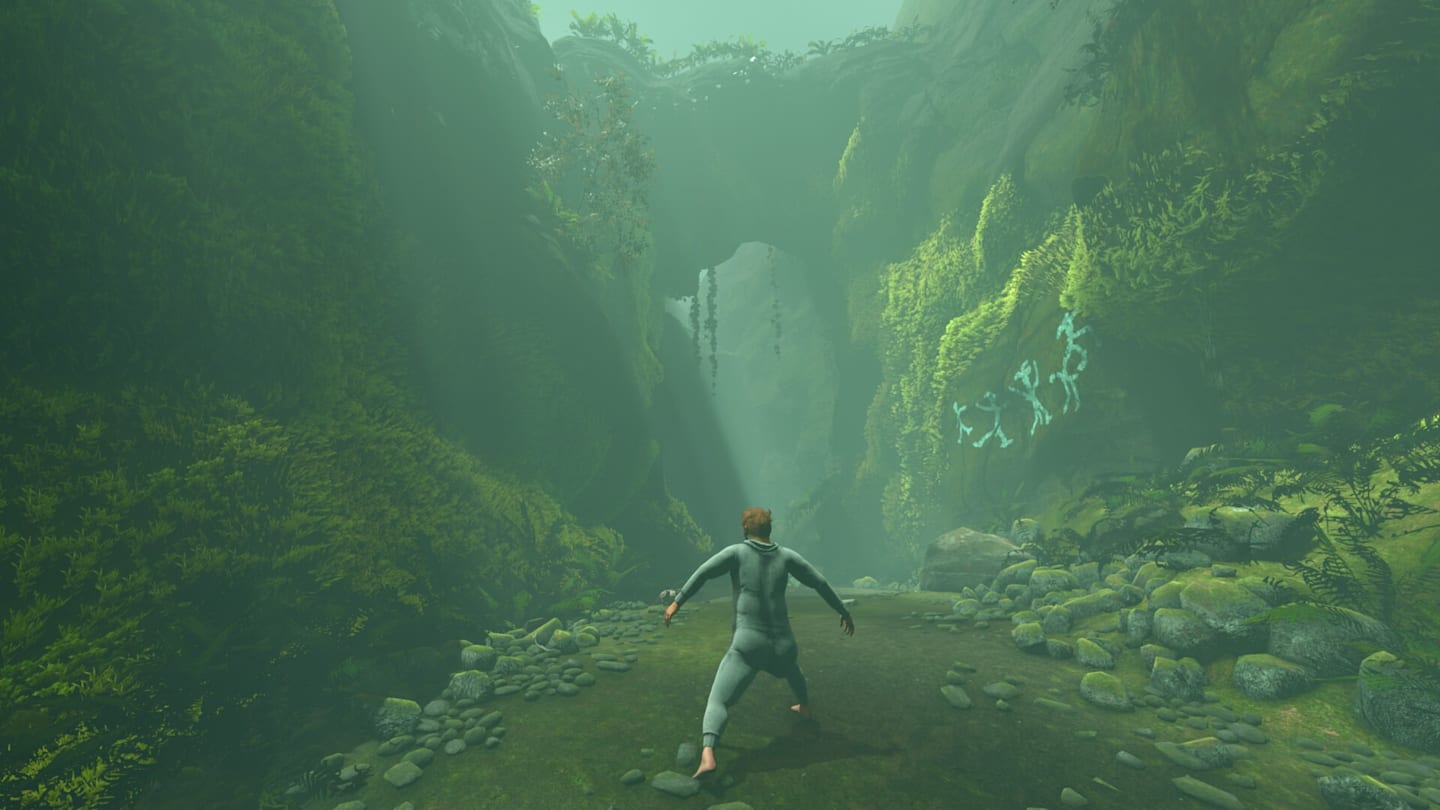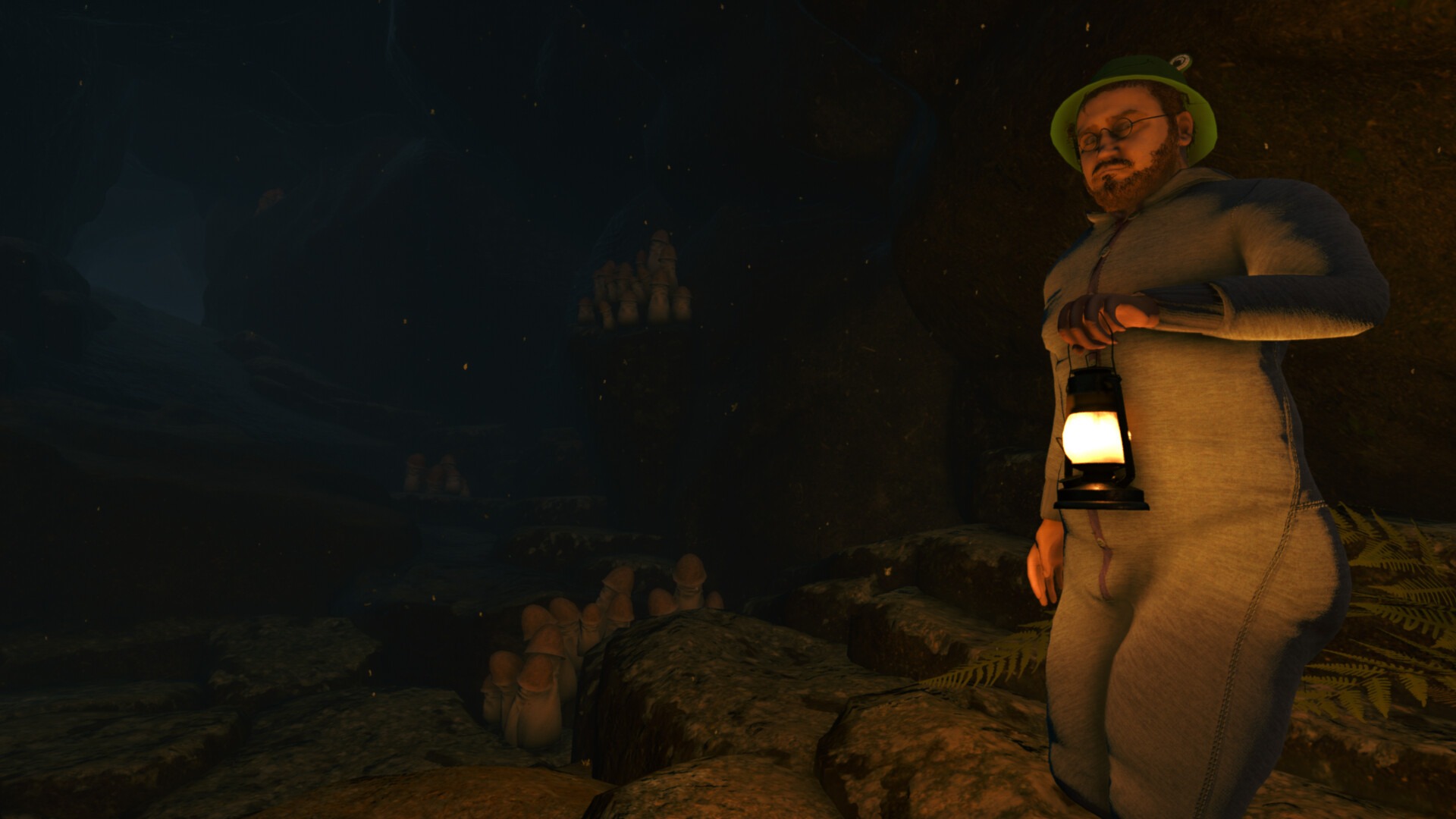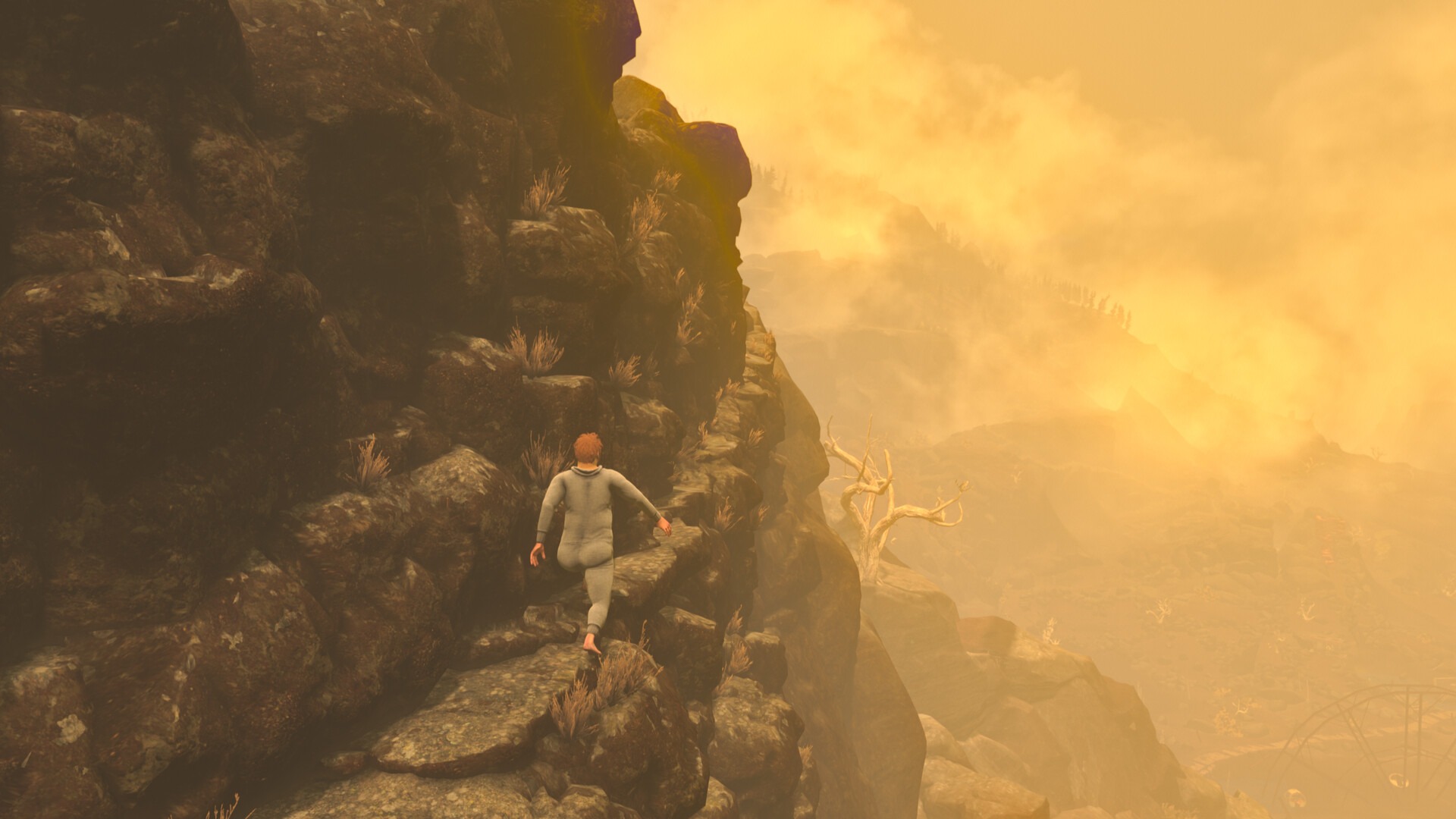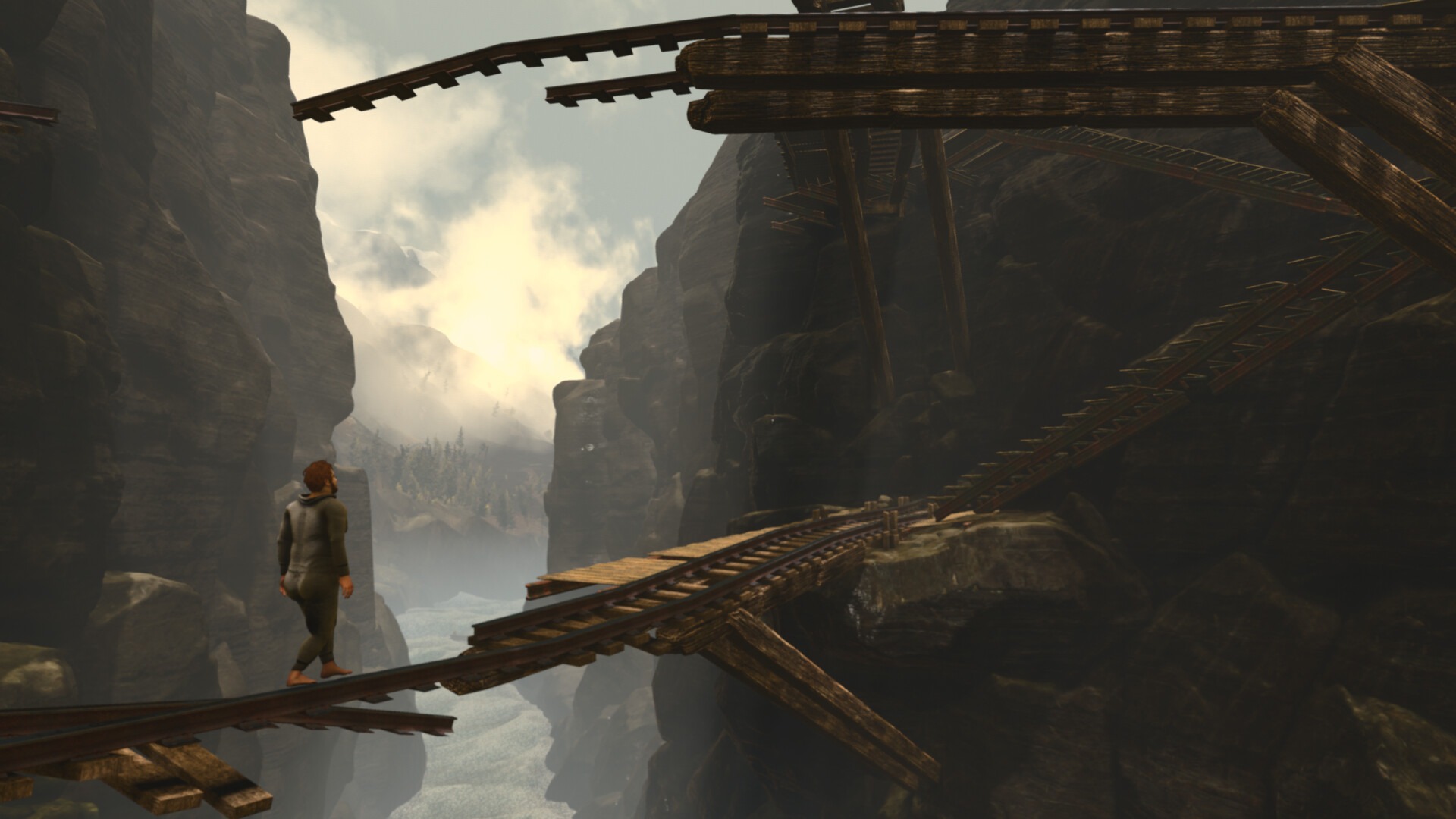
Initially, I dismissed Baby Steps as simply content designed to provoke reactions – frustrating and pointless, not a game I’d find genuinely enjoyable or meaningful. However, after playing for over a week, I was completely wrong. Baby Steps is truly one of the most unusual games I’ve encountered, featuring more explicit male nudity than I’ve ever seen in a video game, and a remarkably silly central gameplay idea. Despite all that, I honestly think it’s a strong example of “games as art” – bringing back a discussion from around 2010 – and one of the best I’ve played.
As a fan of unique games, I’m really excited about Baby Steps! It’s an open world exploration game, and honestly, it reminds me a little of both Death Stranding and QWOP – a wild combination, right? It’s made by Bennett Foddy – you probably know him from QWOP and Getting Over It – and he’s working with Gabe Cuzzillo and Maxi Boch, who he previously collaborated with on Ape Out. They’ve said it’s the kind of game that a big publisher would probably never approve, and that’s exactly why I’m so intrigued!
The main character, Nate, is a deeply insecure guy who’s spent years cooped up in his basement. He’s out of shape from a lifestyle of smoking weed, eating pizza, and watching One Piece (he’s a bit of a self-insert). He rejects helpful advice, wanting to seem strong and independent, but he quickly gives in when he feels pressured by people he sees as cooler or more confident. He’s a little pathetic, and that’s intentional-he’s meant to be someone many gamers can see themselves in. Even the way he talks, with awkward pauses and stutters, feels familiar-it reminds me of times I struggled to find the right words. Right from the start, the typical video game experience of being a powerful hero is turned on its head.

That weirdness really carries over into how you actually play the game. These days, most games feel pretty similar when it comes to controls – you expect the left stick to move you around, the right stick to control the camera, and the triggers to shoot. But in Baby Steps, you can’t even walk normally! It’s heavily inspired by that crazy game QWOP, and it has you lifting and moving each of your left and right feet individually, timing it with Nate’s momentum as you place them down. Seriously, you have to manually make each step, one at a time. At first, it’s ridiculously hard to even move a few feet. It’s a challenge!
Similar to Death Stranding, the different types of ground Nate walks on react to natural forces – things like gravity and friction. This means sometimes you can simply stand, while other times you need to take slow, careful steps to move forward. The game begins gently, with slippery, muddy slopes being the main challenge, but later you’ll encounter more difficult areas like canyons.
What starts as an annoyance can eventually become a really engaging way to experience a game. It’s similar to carefully planning a route on a map in Death Stranding, or scanning the landscape before you glide in Breath of the Wild – planning is essential to fully enjoy the game world. Simply moving forward isn’t enough; you need to consciously consider each step. If you spot something interesting in the distance, you’ll carefully weigh the effort needed to reach it and worry about potentially losing progress. This deliberate approach adds a unique layer of immersion.

The game Baby Steps challenges you to think about what ‘progress’ truly means through its design. It subtly asks, ‘but what is progress?’ If completing the game is your goal, then go straight to the end! If you master the movement controls, you’ll be able to easily climb even the steepest hills. However, if you want a richer experience-exploring the world and fully understanding the movement mechanics-then definitely venture off the main path. You’ll discover much more to see and do. Explore further, and you might even become proficient with Nate’s unsteady legs and awkward balance.
The design is very intentional. Foddy and his team have created a world that’s both captivating and bizarre, but they’ve also made it incredibly risky to venture through. It’s essentially the opposite of a typical open-world game, and usually, the process of getting somewhere is much more stressful and interesting than whatever you ultimately discover there. That is, unless the discovery is self-awareness.
Nate is a character who’s easy to dislike, yet surprisingly easy to identify with, and that’s what makes him so frustrating. It’s painful because I genuinely see myself in him. Sometimes, life feels simpler when you’re safely tucked away, like binge-watching One Piece. It’s much harder to face the world, strive for success, only to be repeatedly set back – whether it’s due to your own pride or just the way things are. I’ve often behaved in ways that weren’t true to myself to please others, and I’ve said ‘no’ when I actually wanted to say ‘yes’, simply out of politeness or a lack of confidence. Nate embodies all the errors we make, and particularly the mistakes that many men are prone to.

Baby Steps frequently features references to male genitalia, whether through vulgar graffiti, Nate’s persistent need for private bathroom breaks, or the fact that the cartoonishly-drawn donkey-men are always unclothed from the waist down. This imagery is constantly present and doesn’t let up. Similar to the monsters in Silent Hill, these elements seem to represent Nate’s own hidden anxieties, revealing more about him – and perhaps even ourselves – than we’d prefer. It wasn’t until I noticed the save file names – Alpha, Beta, and Sigma, which are Greek letters but also terms for defining masculinity – that I realized the various threads and themes in Baby Steps point to a deliberate and purposeful vision from the author.
A game like Baby Steps wouldn’t appeal to big companies like EA, Microsoft, or Ubisoft, and that’s actually what makes it special. It challenges expectations, breaks down conventions, and creates a strong impression, without worrying if everyone understands it. It’s not designed to be simply completed – although the main storyline is fairly straightforward compared to the optional challenges – it’s meant to be experienced and thought about. It demands reflection and understanding, which is hard to do for extended periods. It could easily be something streamers react strongly to, and some players might need to take a break when they get frustrated. And that’s okay! I believe so, anyway. Ultimately, it evoked emotions in me, just as good art should, and it’s sure to make you feel something too.
Read More
- Broadcom’s Quiet Challenge to Nvidia’s AI Empire
- Gold Rate Forecast
- METH PREDICTION. METH cryptocurrency
- How to Do Sculptor Without a Future in KCD2 – Get 3 Sculptor’s Things
- Trump Ends Shutdown-And the Drama! 🎭💸 (Spoiler: No One Wins)
- Investing Dividends: A Contemporary Approach to Timeless Principles
- South Korea’s KRW1 Stablecoin Shocks the Financial World: A Game-Changer?
- Shiba Inu’s Netflow Drama: Bulls, Bears, and 147 Trillion SHIB
- Ether’s Future: 4 Things That Could Make or Break Its Bullish Comeback in 2025
- Hedera’s Latest Move: WBTC Joins the DeFi Party, Let the Bitcoin Liquidity Games Begin!
2025-10-03 18:47